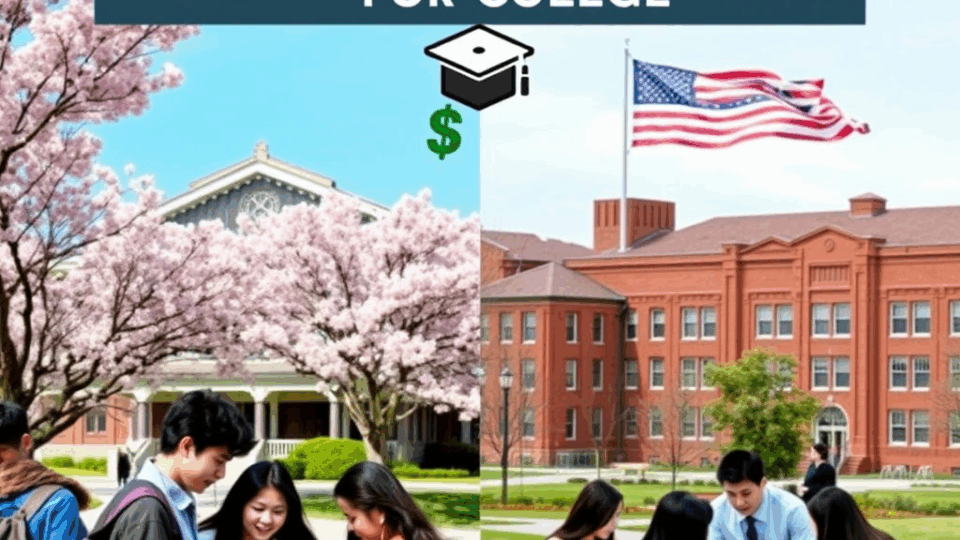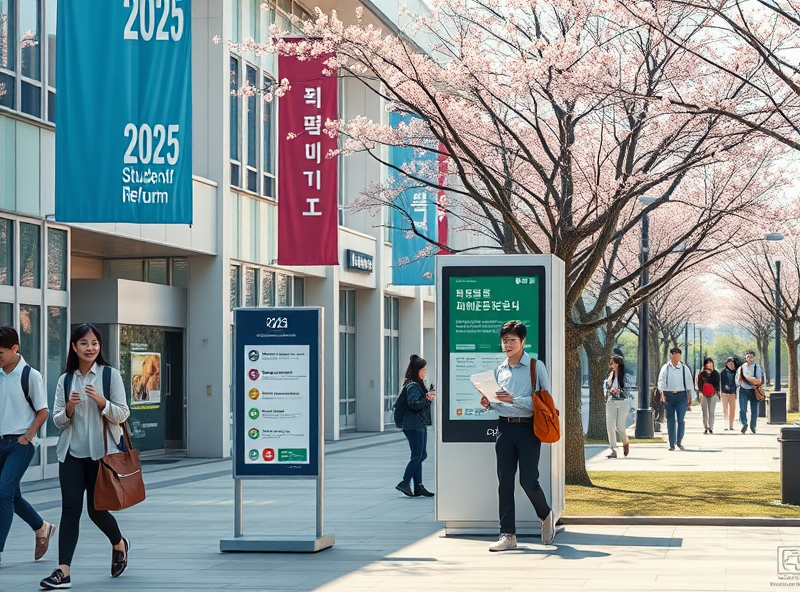
How to Get Government Financial Aid for College: Korea and US Guide
Understanding South Korea’s 2025 Student Aid System

Starting in 2025, South Korea is introducing a significant overhaul to its student financial aid system, aiming to reduce the financial burden on college students and their families. This reform is designed to make higher education more accessible and equitable, especially for low- and middle-income households.
The core of the 2025 system is the expansion of the ‘National Scholarship’ (국가장학금) program. Under the new guidelines, students from households earning less than the median income will be eligible for full tuition coverage at public universities. For private universities, the government will increase its subsidy, covering a larger portion of tuition fees than before.
Another key feature is the introduction of the ‘Income-Linked Repayment Plan’ (소득연계형 상환제도). This allows students to repay their student loans based on their income after graduation, ensuring that repayments are manageable and do not become a financial burden early in their careers.
Additionally, the government plans to simplify the application process by integrating student aid applications with the national tax and income databases. This will reduce paperwork and make it easier for students to apply and qualify for aid.
These changes are part of South Korea’s broader strategy to address declining birth rates and youth unemployment by investing in education and reducing financial inequality. If you’re planning to attend college in Korea after 2025, it’s a good idea to check your eligibility and prepare early.
For official updates and detailed eligibility criteria, you can visit the Korea Student Aid Foundation (KOSAF) website: https://www.kosaf.go.kr/eng/main.do
Steps to Secure Financial Aid in the United States via FAFSA

Navigating college expenses in the U.S. can be overwhelming, but the Free Application for Federal Student Aid (FAFSA) is a crucial first step toward securing financial support. FAFSA determines your eligibility for federal grants, loans, and work-study programs. Here’s a clear, step-by-step guide to help you through the process:
1. Gather Required Documents: Before starting your FAFSA, collect necessary documents such as your Social Security number, tax returns (yours and your parents’ if you’re a dependent), W-2s, bank statements, and records of untaxed income.
2. Create an FSA ID: Visit https://studentaid.gov to create your Federal Student Aid (FSA) ID. This ID allows you to sign your FAFSA electronically and access federal student aid websites securely.
3. Complete the FAFSA Form: Fill out the FAFSA at https://studentaid.gov. The form opens on October 1st each year, and it’s best to apply as early as possible since some aid is distributed on a first-come, first-served basis.
4. List Your Colleges: Include all the colleges you’re considering, even if you haven’t applied yet. Each school will use your FAFSA information to determine your financial aid package.
5. Review Your Student Aid Report (SAR): After submitting the FAFSA, you’ll receive a SAR summarizing your information. Check it for accuracy and make corrections if needed.
6. Wait for Financial Aid Offers: Colleges will send you financial aid award letters outlining the types and amounts of aid you’re eligible for. Compare offers carefully before making a decision.
7. Accept Your Aid: Log in to your college’s financial aid portal to accept or decline each type of aid. Prioritize grants and scholarships before loans.
By following these steps, you can maximize your chances of receiving financial aid and reduce the burden of college costs. For more information, visit the official Federal Student Aid website: https://studentaid.gov.
Key Differences in Student Aid Between South Korea and the US

When planning for college, understanding how student financial aid works in different countries can make a big difference in your education journey. South Korea and the United States both offer government financial aid, but their systems differ significantly in structure, eligibility, and repayment terms.
In South Korea, the government primarily supports students through the Korea Student Aid Foundation (KOSAF). Aid is largely based on household income, and includes grants, low-interest loans, and work-study programs. The system is highly centralized, and students apply through a national portal. A key feature is the Income-Contingent Loan (ICL), which allows students to repay loans only after they start earning above a certain income threshold. This reduces financial pressure after graduation.
In contrast, the U.S. student aid system is more decentralized. Students apply for federal aid through the Free Application for Federal Student Aid (FAFSA), which assesses eligibility for grants (like the Pell Grant), subsidized and unsubsidized loans, and work-study. Additionally, each state and college may offer its own aid programs. U.S. loans typically begin repayment six months after graduation, regardless of income, though income-driven repayment plans are available.
Another key difference is the emphasis on merit. In Korea, most aid is need-based, while in the U.S., a significant portion of scholarships and grants are awarded based on academic or athletic performance.
Understanding these differences can help students and families make informed decisions about studying domestically or abroad. For more details on Korea’s aid system, you can visit the official KOSAF website: https://www.kosaf.go.kr/eng/main.do
Tips to Maximize Your Educational Financial Support

Navigating the world of government financial aid can be overwhelming, but with the right strategies, you can significantly increase the support you receive for your college education—whether you’re in South Korea or the United States.
First, always apply early. Both countries have strict deadlines for financial aid applications. In the U.S., submit your FAFSA (Free Application for Federal Student Aid) as soon as it opens on October 1st. In Korea, the Korea Student Aid Foundation (KOSAF) also opens applications in specific windows throughout the year. Early applications often receive priority consideration.
Second, be thorough and accurate. Incomplete or incorrect information can delay or reduce your aid. Double-check your documents, including income statements, tax returns, and school records.
Third, understand all available programs. In the U.S., this includes Pell Grants, Federal Work-Study, and subsidized loans. In Korea, look into 국가장학금 (National Scholarships), 학자금 대출 (student loans), and income-based grants. Visit KOSAF’s official site for updates: https://www.kosaf.go.kr/eng/
Fourth, maintain your academic performance. Many scholarships and grants require a minimum GPA or credit load. Staying in good academic standing ensures continued eligibility.
Lastly, don’t overlook local or private scholarships. In both countries, regional governments, foundations, and even companies offer additional aid. Use scholarship search engines and consult your school’s financial aid office for opportunities.
By staying organized, informed, and proactive, you can maximize your financial support and focus more on your studies and less on financial stress.







